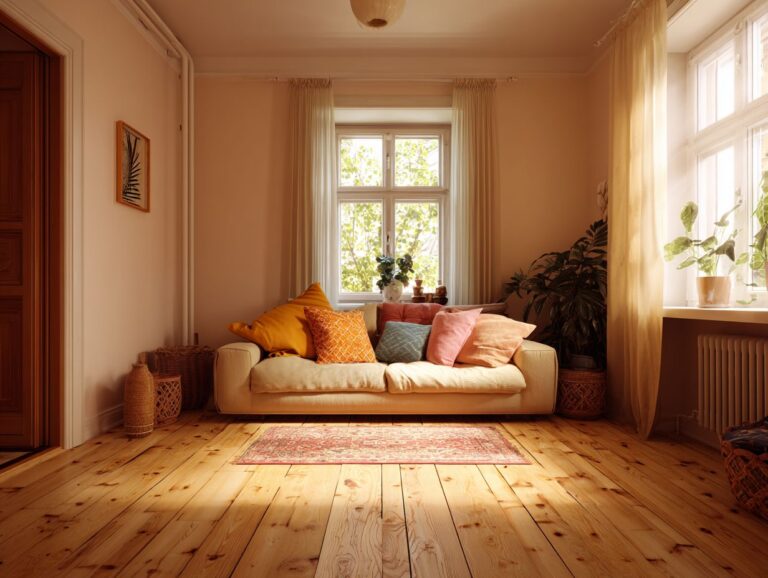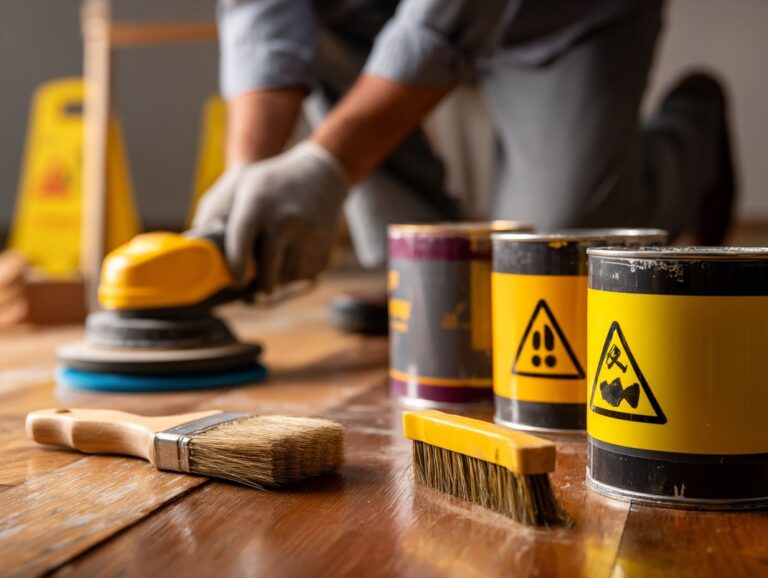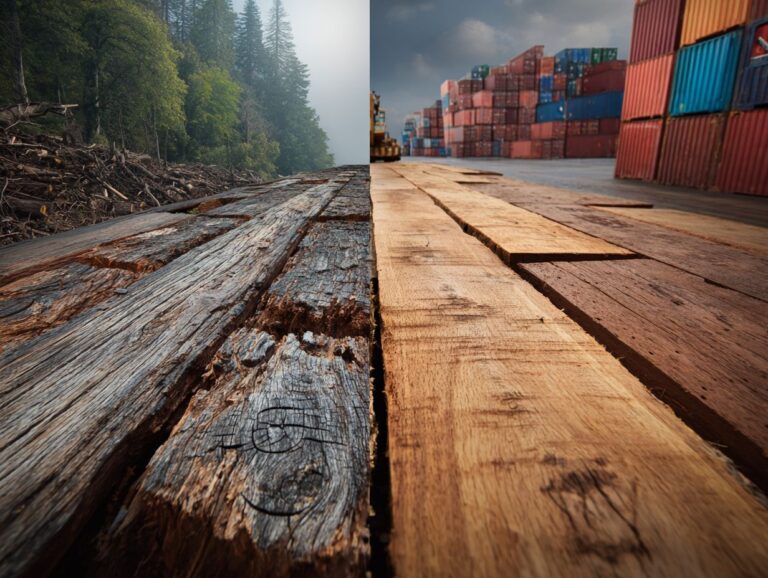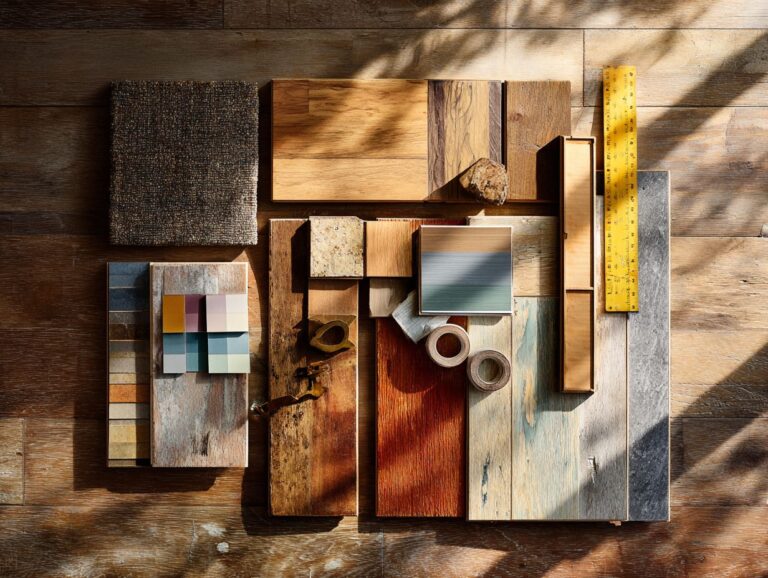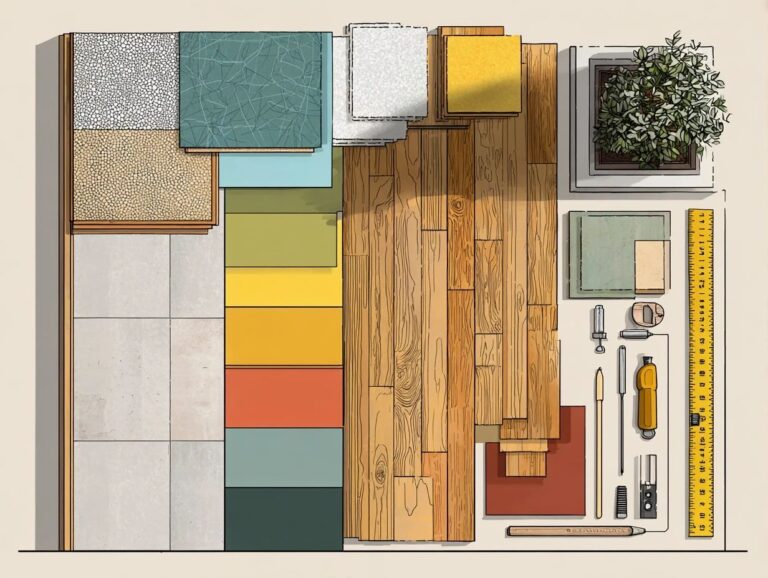Floor Refinishing Cost Factors – Complete Breakdown
Are you curious about the factors that influence hardwood floor refinishing costs? Knowing these costs is important whether you’re planning to hire hardwood experts or start a DIY refinishing job. From floor sanding techniques to materials available at Home Depot, this guide breaks down what affects pricing. Also, watch useful YouTube tutorials to improve what you know. Find out more to help you make informed decisions about your flooring.
Key Takeaways:
Contents
- Types of Flooring Materials
- Hardwood Floor Refinishing Cost Analysis
- Labor Costs
- Materials and Supplies
- Condition of Existing Floors
- Size of the Area
- Additional Services
- Frequently Asked Questions
- What factors contribute to the cost of floor refinishing?
- Does the type of flooring impact the cost of refinishing?
- Is the condition of the flooring important for cost considerations?
- How does the size of the area affect the cost?
- Are labor and material costs fixed or variable?
- Are there any additional costs to consider for floor refinishing?
Importance of Understanding Costs
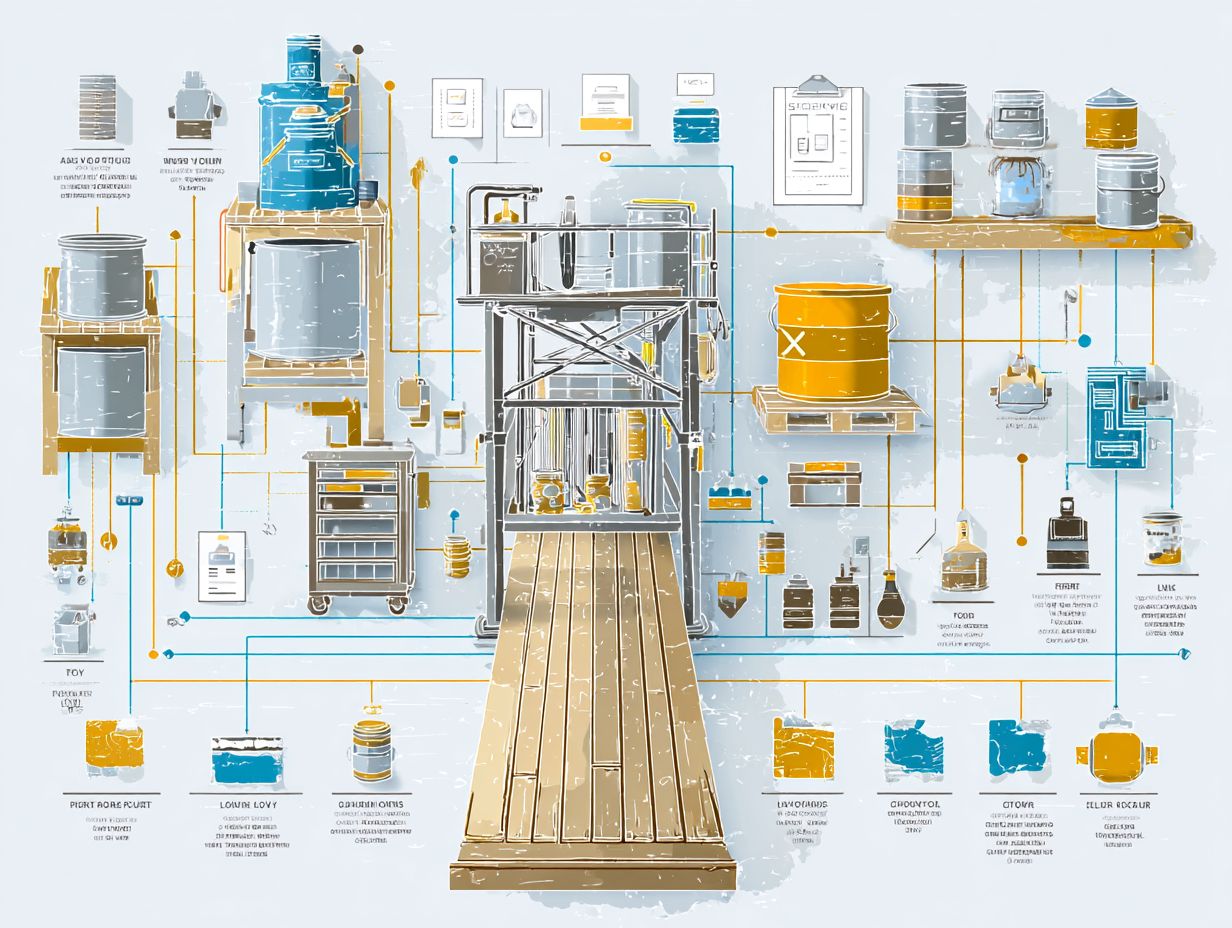
Knowing the various costs associated with refinishing can lead to better financial decisions, potentially increasing property value by up to 10% after refinishing hardwood floors.
The primary costs to consider include materials, labor, and potential repairs.
For example, high-quality finishing products can range from $50 to $100 per gallon, while professional labor typically costs between $3 to $6 per square foot.
If repairs are necessary, allocate an additional $1,000 to $3,000 depending on the extent of damage. Knowing these numbers helps homeowners figure out the total cost and predict possible increases in property value, making refinishing a wise financial decision.
Overview of the Refinishing Process
The refinishing process typically involves sanding, applying a finish, and buffing, with each step contributing to the final aesthetic quality of the hardwood floors.
Sanding is critical for removing imperfections and ensuring a smooth surface. Use a drum sander for large areas, starting with coarse grit and progressing to a finer grit to achieve a polished look.
After sanding, choose a finish based on your desired sheen and durability; options include:
- Water-based polyurethane for a quick dry time
- Oil-based for a richer color
Making a surface smooth and glossy can greatly improve its look. Hiring a professional can help with even application and provide advice suited to your specific flooring type.
Types of Flooring Materials
The type of flooring affects how it is refinished, how much it costs, and how it should be cared for. If considering installation options, you might find our analysis on DIY vs Professional Flooring Installation – Cost Analysis quite enlightening.
Hardwood Flooring
Hardwood flooring, including popular options like oak and cherry wood, typically requires specialized refinishing techniques to maintain its natural beauty.
For refinishing, expect to pay between $3 to $8 per square foot, depending on the finish used.
For a professional touch, consider using polyurethane for its durability and ease of application. Lacquer provides a high-gloss finish but requires more skill due to faster drying times.
Start by sanding the floors to remove the old finish, then apply 2-3 coats of your chosen product, allowing adequate drying time between each layer. Make sure the area has good airflow for the best drying results.
Hardwood Floor Refinishing Cost Analysis
Hardwood Floor Refinishing Cost Analysis
Refinishing Cost Breakdown: Cost per Square Foot by Wood Type
Refinishing Cost Breakdown: Overall Project Costs
Refinishing Cost Breakdown: Refinishing Process Costs
Refinishing Cost Breakdown: Labor and Additional Service Costs

The Hardwood Floor Refinishing Cost Analysis provides a detailed list of costs for refinishing various wood floors. The data shows costs based on wood type, project size, refinishing methods, and extra services. This information is useful for property owners planning refinishing projects.
Refinishing Cost Breakdown reveals that Mahogany is the most expensive wood to refinish at $7.00 per square foot, likely due to its durability and aesthetic appeal. Maple follows at $6.50 per square foot, while Bamboo is more affordable at $4.50 per square foot. Common woods such as Cherry, Engineered wood, Oak, and Parquet are priced similarly at around $4.00 to $4.25 per square foot. The cost variation reflects differences in wood properties and the complexity of refinishing each type.
- Overall Project Costs: The average project cost stands at $1,800, encompassing typical room sizes and refinishing options. A small room (40 sq ft) incurs a cost of approximately $220, while a medium room (100 sq ft) costs around $550. Larger spaces, such as a large room (400 sq ft), can cost up to $2,200. Refinishing an entire full house (1,000 sq ft) averages around $5,500, and a very large house (3,000 sq ft) can reach $15,000, emphasizing the significant investment required for extensive projects.
Refinishing Process Costs indicate that different methods impact overall expenses. Sanding costs about $1.75 per square foot, while staining is slightly higher at $2.00 per square foot. Recoating is the most economical at $1.50 per square foot. The traditional refinishing process costs $5.50 per square foot, whereas the more advanced dustless refinishing is priced at $6.50 per square foot, reflecting its modern technique and cleaner approach.
- Labor and Additional Service Costs: Labor constitutes a significant part of the overall cost, accounting for 80%. The hourly labor rate and cleanup hourly rate both stand at $110 This shows the skill required for the work. Additional services like furniture moving cost $35 per room, while carpet removal adds $3.00 per square foot, influencing the final budget based on project specificities.
This cost analysis highlights the need to think about wood type, project size, and services when planning to refinish hardwood floors. By knowing these costs, homeowners can make decisions that fit their budget and goals, leading to a successful refinishing project.
Laminated Flooring
Laminated flooring is generally not recommended for refinishing due to its synthetic top layer, which can be damaged during sanding.
Since refinishing isn’t an option, homeowners should consider alternatives for maintaining or replacing laminate floors.
To keep your floors looking fresh, regular cleaning is essential; use a damp mop and gentle cleaner specifically formulated for laminate. For scratches or dents, consider using a laminate repair kit containing fill sticks and markers to blend imperfections.
If you need to replace flooring, consider luxury vinyl planks or engineered hardwood. These options are more durable and can be refinished, offering a better return on investment over time.
Tile and Stone Flooring
Tile and stone flooring require a different approach to maintenance and refinishing, often involving specialized cleaning solutions and sealants.
To effectively maintain tile and stone floors, start with regular sweeping or vacuuming to remove dirt that can scratch the surface.
For deeper cleaning, use pH-neutral cleaners specifically designed for stone or tile to avoid damage. Professional cleaning typically costs between $0.25 to $0.75 per square foot and can rejuvenate the surface.
Adding a protective layer to your floors every 1-3 years can stop stains and water damage. Expect sealing services to range from $0.50 to $1.50 per square foot, depending on the type of stone.
Labor Costs
Labor costs play a major role in the total cost of floor refinishing, and prices can differ greatly depending on the area and the skill level of the workers.
Hourly Rates of Professionals
On average, professional floor refinishing contractors charge between $50 and $100 per hour, depending on their experience and the complexity of the job.
Rates can vary significantly by location; for instance, urban centers may see prices on the higher end due to demand. Factors such as contractor reputation and the type of finish required-matte, gloss, or specialty stains-also influence costs.
For example, a highly rated contractor in New York City might charge $90 per hour, while one in a rural area could charge $60. Ask for estimates from different contractors and check reviews to find reasonable prices and reliable work.
Experience and Expertise
The skills of a contractor can significantly influence both the quality of work and the cost. Those with more experience usually ask for higher fees due to their skills.
Hiring experienced contractors may seem costlier upfront, but the long-term benefits often outweigh the initial expenditure.
Experienced professionals have a lot of knowledge, decreasing the chances of mistakes that result in expensive corrections. An electrician with a lot of experience can spot problems with building codes right away, while a contractor with less experience might miss them. This can prevent fines or repairs later on.
Their efficiency can lead to shorter project timelines, minimizing labor costs. Selecting contractors with good reviews can make you feel secure and help you stay within your budget.
Geographic Location Impact
Labor costs can fluctuate significantly based on geographic location, with urban areas typically commanding higher rates than rural regions.
For instance, the average hourly wage for a construction worker in San Francisco may exceed $40, while similar roles in rural Arkansas might only offer around $20.
Differences arise due to living expenses, need for qualified workers, and regional rules. Cities with a booming tech sector, like Seattle, often see inflated salaries in the IT field, compared to smaller towns.
Businesses must therefore carefully analyze market conditions to budget effectively for labor costs.
Materials and Supplies
The kind and quality of materials used in floor refinishing can greatly affect how the floor looks in the end and how much the project costs. For a deeper understanding of this process, see also: DIY Floor Refinishing – Tools, Steps and Risks.
Types of Finishes
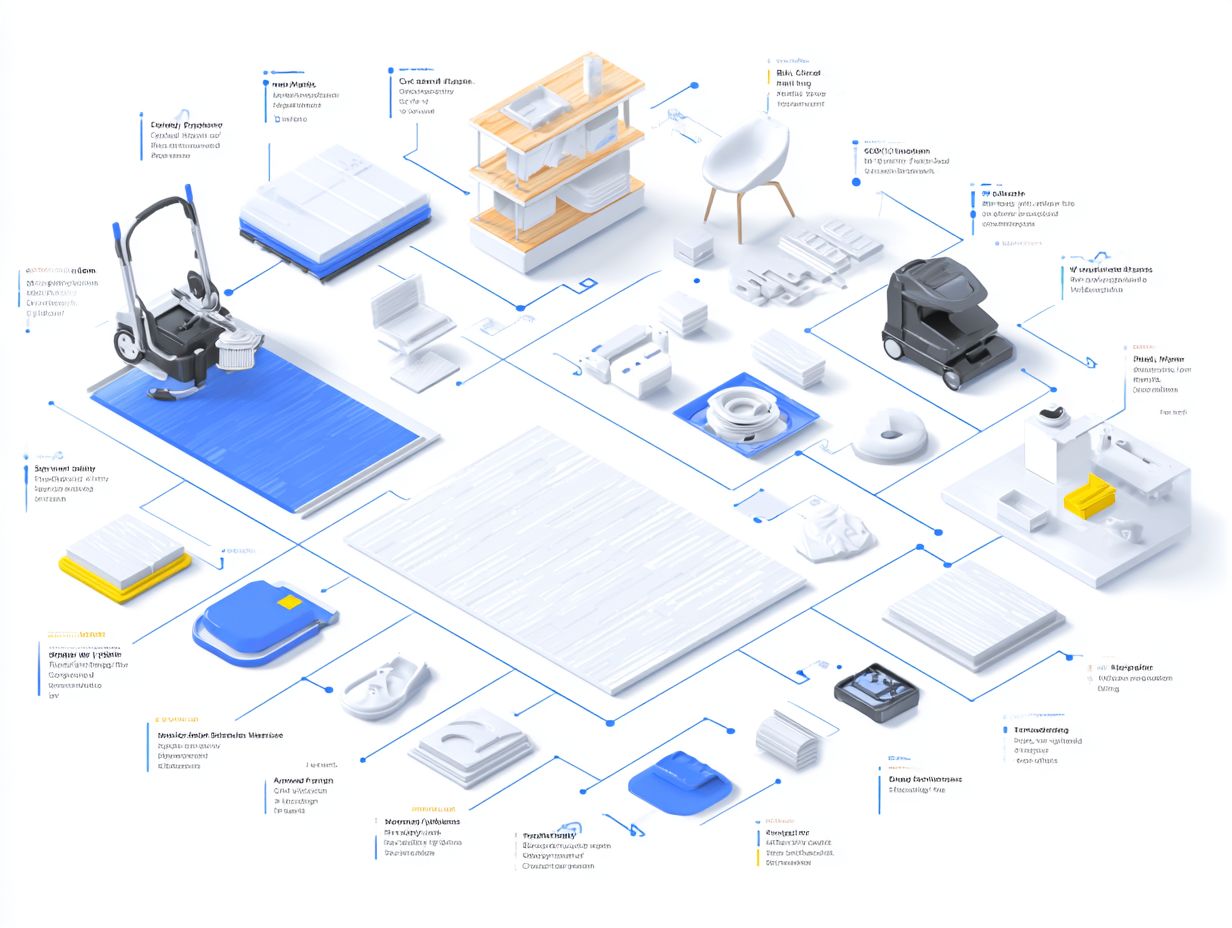
Picking the right finish, such as lacquer, oil-based, or polyurethane, can significantly influence both the look and the durability and care needs.
Lacquer offers a fast-drying, glossy finish ideal for fine furniture but typically costs between $30 to $50 per gallon and can be challenging to apply evenly.
Oil-based finishes, ranging from $25 to $70 per gallon, provide a warm, rich look, perfect for woodwork, yet require longer drying times and additional maintenance.
Polyurethane is priced between $20 and $60 per gallon. It is durable and water-resistant, which makes it suitable for high-traffic areas.
Think about the project’s needs and the setting before deciding.
Sandpaper and Abrasives
Selecting the right sandpaper and abrasive materials is important for getting a smooth surface when refinishing. Prices differ based on the grit and brand.
For hardwood floors, the best sandpaper options include:
- 36-60 grit for heavy stripping
- 80-120 grit for smoothing
- 150-220 grit for finishing touches
Brands like Norton and 3M offer reliable products, with prices ranging from $0.50 to $1.50 per sheet. Renting a drum sander usually costs between $50 and $75 per day, while a handheld orbital sander generally rents for $25 to $35 per day.
Weigh the cost of rental against purchase if you plan multiple refinishing projects.
Additional Supplies
Additional supplies, such as cleaning solutions and furniture moving services, can add hidden costs to the refinishing project, potentially increasing the overall budget.
To keep expenses in check, consider these common supplies:
- Cleaning solvents ($10-$30): Invest in eco-friendly options to protect your health and the environment.
- Sandpaper and sanding blocks ($5-$20): Buy in bulk to reduce costs.
- Drop cloths ($10-$25): Choose washable ones to avoid repeated purchases.
- Furniture moving services ($100-$300): If possible, enlist friends to help, minimizing labor costs.
By planning and sourcing wisely, you can effectively control your budget while achieving a polished finish.
Condition of Existing Floors
The starting state of the current floors affects the refinishing work, possibly raising expenses for repairs and preparation.
Extent of Damage
Floors with significant damage may require extensive repairs before refinishing, which can add $2 to $5 per square foot in costs.
To assess the extent of damage, start by inspecting for signs such as deep scratches, significant water damage, or unevenness.
For minor repairs, options include:
- Filling gaps with wood filler ($30-$50)
- Replacing damaged boards ($3-$10 per board)
If the subfloor is compromised, repair or replacement may cost $1 to $3 per square foot.
To understand the situation better, you might want to hire an expert to look over the damage carefully. This can cost between $100 to $300, depending on where you are and how serious the damage is.
Previous Treatments
Previous treatments can affect the refinishing process, particularly if old finishes were poorly applied or incompatible with new products.
To handle incompatible finishes, start by identifying the current finish type-common ones include polyurethane, shellac, and varnish.
If the previous treatment is a shellac, you can usually apply a new finish directly because it is compatible with many products.
If it’s an oil-based finish, consider stripping it completely using a chemical stripper or sanding down to bare wood. After that, try your new finish on a small hidden spot to make sure it works well together.
This proactive approach can help avoid costly mistakes and achieve a smooth, professional-looking surface.
Size of the Area
The cost of the refinishing project depends on the size of the area, with prices usually determined by square footage.
Square Footage Considerations
Using a cost calculator, homeowners can estimate refinishing expenses by inputting their floor’s square footage and desired finish type.
To figure out the exact cost, follow these steps:
- Measure the area of the room by multiplying the length by the width in feet. For example, if a room is 12 feet long and 10 feet wide, the area is 120 square feet.
- Next, identify the cost per square foot for your chosen finish; for instance, polyurethane might cost $2 per square foot.
- Multiply the area (120) by the cost ($2), resulting in an estimated refinishing expense of $240.
This method clearly shows possible expenses, helping with effective budget planning.
Room Layout and Accessibility
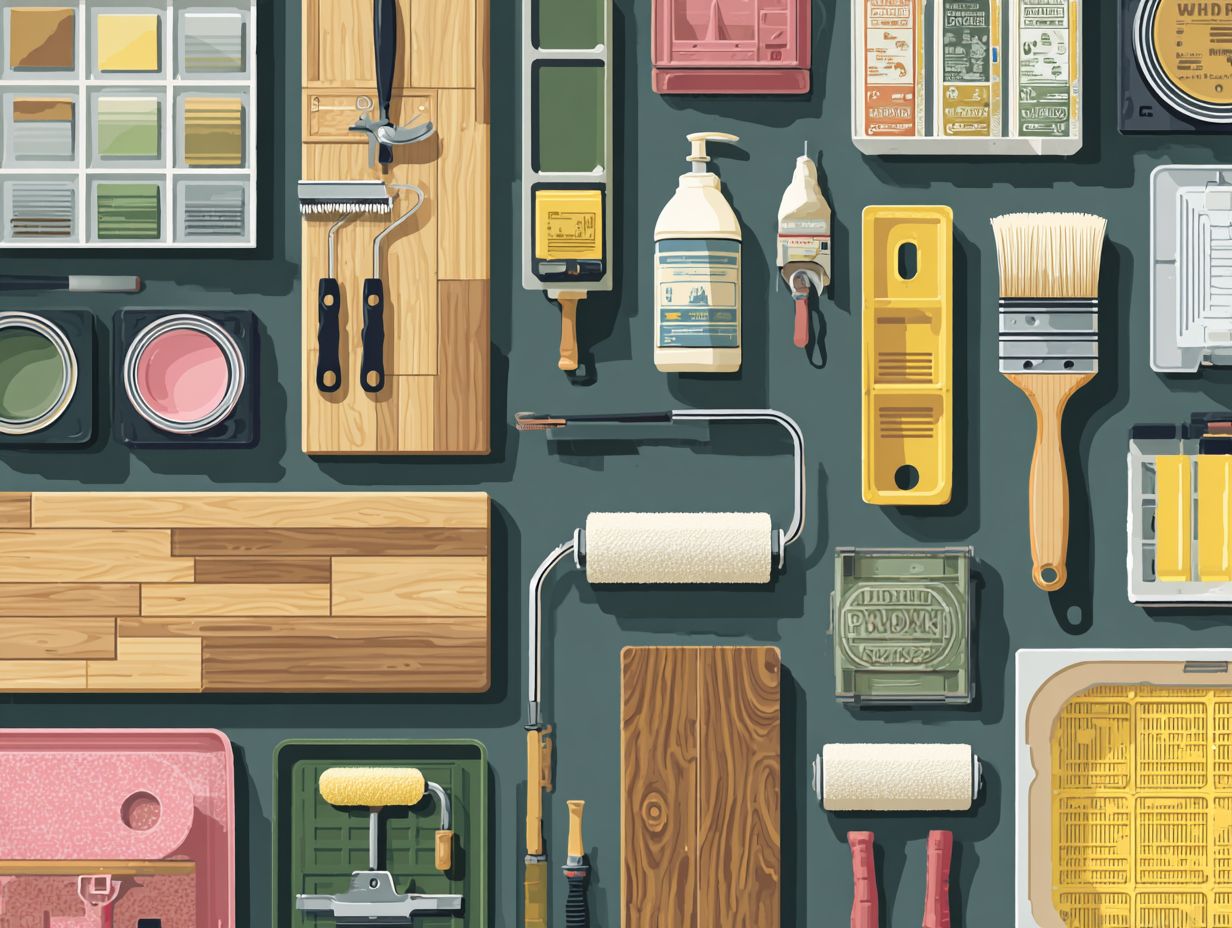
The layout of the room and accessibility can impact labor costs and the complexity of the refinishing job.
For instance, a cramped space may require extra care when moving furniture, potentially increasing labor hours and costs.
Before starting, consider measuring access points-like doorways and hallways-to determine how easily large items can be moved.
If the area is cluttered, allocating time for decluttering and preparation can add further expense.
Use tools such as furniture sliders to simplify the movement of heavier pieces, minimizing risk of damage and streamlining the process.
Setting aside a day to get ready can end up saving both time and money when you are in the refinishing stage.
Additional Services
Homeowners often choose extra services during refinishing, like repairs and custom staining. These can improve the final look but make the project more expensive.
Repairs and Patching
Repairing damaged boards or patching areas can add $1 to $3 per square foot to the refinishing budget, depending on the extent of the work needed.
To evaluate the need for repairs, begin by inspecting the boards for scratches, dents, or discoloration.
For minor scratches, a simple sanding and refinishing may suffice, while deeper damage could require a patch. If patching is necessary, gather materials like wood filler, sandpaper, and matching stain.
Start by cleaning the area, applying the filler, and then sanding smooth once dry. Aim for a seamless blend with the surrounding wood.
Budget an additional $50-$150 for supplies based on the size and complexity of the repair.
Custom Staining Options
Custom staining can range from $50 to $150 extra per gallon, adding a unique touch while increasing refinishing costs significantly.
Choosing the right stain involves considering the type of wood and the desired aesthetic. For lighter woods like maple, a clear or light stain shows off the natural grain, while darker stains, such as walnut, make oak floors look richer.
It’s essential to test samples on a small area to see how they look in your space’s lighting. Consult with your flooring professional about options that complement your existing decor. This mindful approach can help you achieve a beautiful finish without overspending.
Frequently Asked Questions
What factors contribute to the cost of floor refinishing?
Several main things can influence the price of floor refinishing. These include the kind and state of the floors, the size of the space, and the work and supplies needed for the job.
Does the type of flooring impact the cost of refinishing?
Yes, the type of flooring can play a significant role in the cost of refinishing. Different materials, such as hardwood, tile, or laminate, may require different techniques and materials, which can impact the overall cost.
Is the condition of the flooring important for cost considerations?
Absolutely. The condition of the flooring, including any damage or wear and tear, can impact the cost of refinishing. In some cases, repairs may be necessary before refinishing can take place, which can add to the overall cost.
How does the size of the area affect the cost?
The size of the area being refinished is a major factor in determining the cost. The larger the space, the more labor and materials will be required, which can increase the overall cost. Bigger projects might qualify for discounts due to their size.
Are labor and material costs fixed or variable?
Labor and material costs can vary depending on the specific project and the professionals hired. It’s important to get detailed estimates and compare prices from different companies to determine the best overall value for your specific project.
Are there any additional costs to consider for floor refinishing?
In addition to the actual refinishing process, there may be additional costs to consider, such as moving furniture, replacing baseboards, or applying a sealant or finish. It’s important to discuss these potential costs with your contractor to get a complete breakdown of the project’s total cost.
